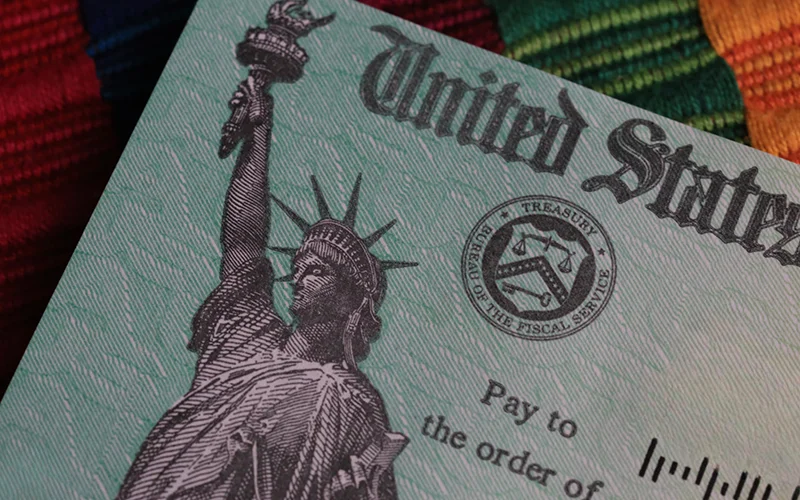From CBS News – By Aimee Picchi —
The IRS said it’s issuing bigger tax refunds compared with a year earlier, signalling a potential boon for Americans who rely on their annual refund to help pay down debt, start an emergency fund or deal with rising costs.
As of February 16, the average tax refund is $3,207, the IRS said in its latest tax season update. That’s 2.1% higher than the same period a year ago.
The bigger average refund marks a reversal from the dip that the typical taxpayer experienced in 2023, when refunds were 3% lower due to the expiration of pandemic tax benefits. That proved to be a double whammy for households already hit by inflation, which has pushed up prices of everything from food to housing.
But this year, some taxpayers are receiving bigger refunds after the IRS adjusted many of its provisions for inflation, pushing the standard deduction and tax brackets about 7% higher for the 2023 tax year, which is the period for which taxpayers are now filing their taxes.
Workers whose pay didn’t keep up with inflation last year are likely to get bigger tax refunds — up to 10% more, Jackson Hewitt chief tax information officer Mark Steber told CBS MoneyWatch earlier this year. Tax refunds, which often represent a household’s biggest annual influx of cash, are likely to be used to pay for necessities by 4 in 10 taxpayers who expect a refund this year, according to a recent Credit Karma poll.
Here’s what to know about this year’s tax refund amount.
Are tax refunds higher in 2024?
The IRS on Friday said that the typical tax refund is about 2.1% higher than a year ago. That means the average taxpayer through February 16 has received about $3,207 from the tax agency, compared with $3,140 at the same time a year earlier.
Still, there are seven weeks remaining in the current tax season, which means that the data could fluctuate until the IRS stops accepting tax returns on April 15. (Tax filers can also ask for an automatic extension, which gives them until October 15 to file their tax forms.)
So far, about 34.7 million people have filed tax returns, a fraction of the 146 million individual tax returns that the IRS expects this year.
Will I get a bigger tax refund in 2024?
That depends on your individual circumstances, ranging from income to life changes, such as whether you welcomed a new child to your family, bought a house or got married.
And some taxpayers could end up owing more in 2024, such as if they took on a side gig last year to offset the impact of inflation and didn’t pay quarterly self-employment taxes. And there are other issues that could lower your refund, such as families with teenage children who aged out of the $2,000 child tax credit, since only kids under 17 qualify for the benefit.
You can get a sense of your 2024 refund by using a tax refund calculator, a tool offered by tax prep companies such as H&R Block as well as financial sites like Nerdwallet.
When can I expect my tax refund?
Most taxpayers who file electronically will get their refunds within 21 days, according to the IRS. However, the IRS cautions that some returns could take longer, including returns that are filed on paper forms, which require more time to process.
The IRS said the best way to check the status of your refund is to visit Where’s My Refund? on IRS.gov or the IRS2Go app.
The IRS updates refund data overnight, and only once per 24-hour period, so the agency said taxpayers don’t need to check more frequently than on a daily basis. For people who file electronically, the “Where’s My Refund” tool should show your status within 24 hours of filing.
If you mail a paper return, the “Where’s My Refund” site requires 4 weeks to show your status, the agency says.
Aimee Picchi is the associate managing editor for CBS MoneyWatch.
Contact Kleshinski, Morris & Morrison CPAs
If you need help with your taxes, or any type of professional accounting services, contact the experts at Kleshinski, Morrison & Morris CPAs. Reach us by phone at 419-756-3211, email to kmm@kmmcpas.com, or by filling out the contact form on this website here.


